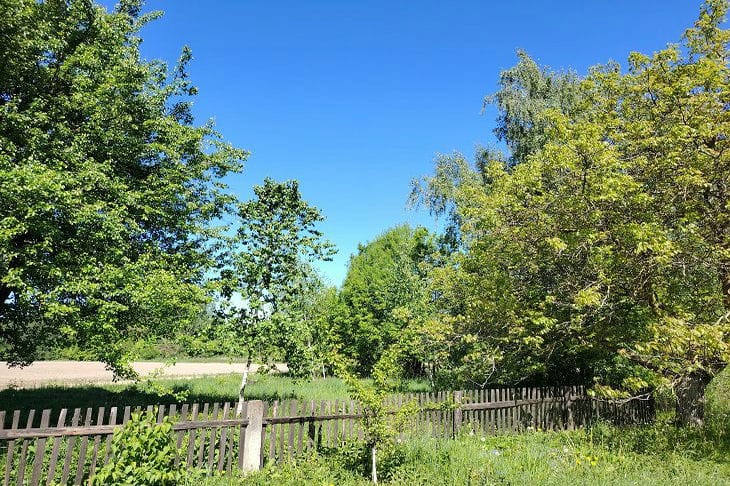What trees are planted near the house in villages: traditions and advice from experienced gardeners
Trees near a house in the village are not only an element of landscape design, but also part of centuries-old traditions.
They create coziness, protect from wind and sun, please the eye and often have practical use. Choosing trees to plant near the house is an important decision for every rural resident.
Deciduous trees
Birch is one of the most popular trees for planting near a house in the village.
Its slender silhouette and snow-white bark give the area a special charm. Birch is unpretentious, grows quickly and cleans the air well.
However, it is worth considering that it has a powerful root system, which can damage the foundation if the tree is planted too close to the house.

The linden tree is another favorite tree of rural residents. It has a dense crown that provides cool shade on a hot day.
Linden blossom is widely used in folk medicine, and its honey-bearing qualities attract bees, which is especially valuable for those involved in beekeeping.
Maple is a tree that can often be found near village houses. Its openwork crown creates a beautiful silhouette, and in autumn the foliage turns bright colors, making the yard especially picturesque.
The maple is unpretentious and tolerates pruning well, which allows the crown to be shaped according to the wishes of the owners.
Fruit trees
The apple tree is probably the most common fruit tree in village gardens. It not only produces tasty and healthy fruits, but also blooms beautifully in the spring.
There are many varieties of apple trees suitable for different climate zones, making this tree a versatile choice for planting near the home.
Cherries and sweet cherries are also often found in village yards.
These trees not only delight with delicious berries, but also create a picturesque view during flowering. They are relatively unpretentious and with proper care can bear fruit for many years.
Pear is another popular fruit tree for planting near the house. It is more capricious in care than the apple tree, but its fruits are highly valued for their taste and useful properties. Pear also blooms beautifully and can become a real decoration of the yard.
Coniferous trees
Spruce and pine are often planted in village yards, especially in northern regions. These evergreen trees are not only beautiful, but also useful – they emit phytoncides that purify the air. In addition, coniferous trees create excellent protection from wind and noise.
Juniper is a compact coniferous plant that is often used to create hedges or as a decorative element of landscape design. It is unpretentious, frost-resistant and retains an attractive appearance all year round.
Ornamental trees
Rowan is a tree that can often be found near village houses. It is valued not only for its beautiful appearance, especially in autumn, when the branches are covered with bright berries, but also for the medicinal properties of the fruits.
Lilacs, although technically a shrub, often grow to the size of a small tree. Their fragrant blooms are a real highlight of any yard.
Lilacs are unpretentious and long-lived, making them a popular choice for planting near the home.
The choice of trees for planting near a house in the village depends on many factors: climate conditions, soil characteristics, plot size and personal preferences of the owners.
It is important to consider not only the aesthetic qualities of trees, but also their practical benefits, as well as the potential impact on the foundation of the house and other buildings.
